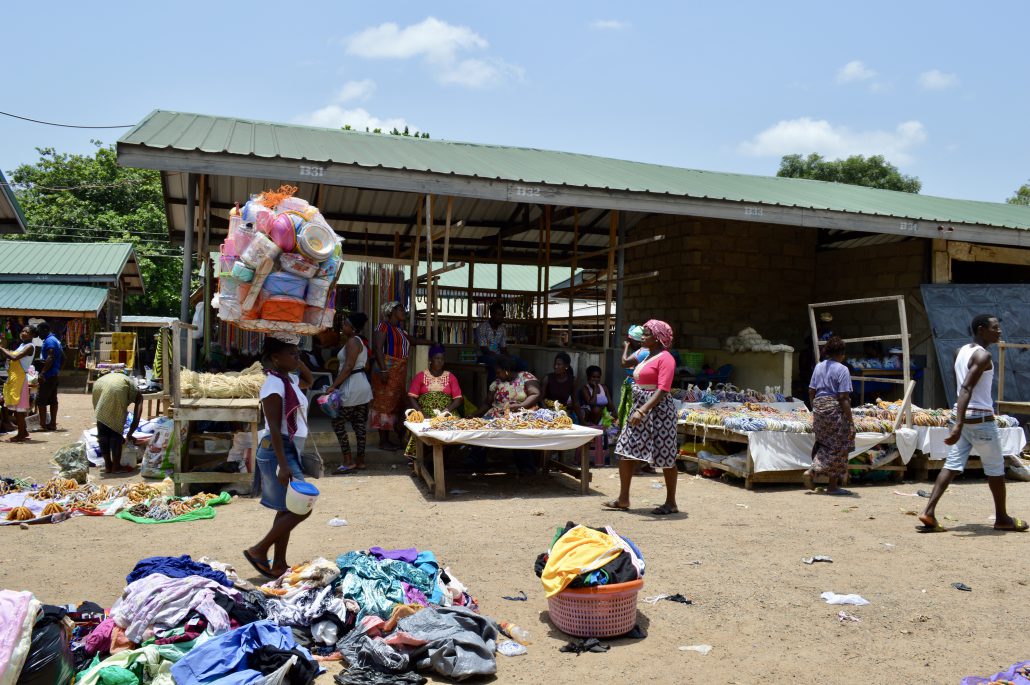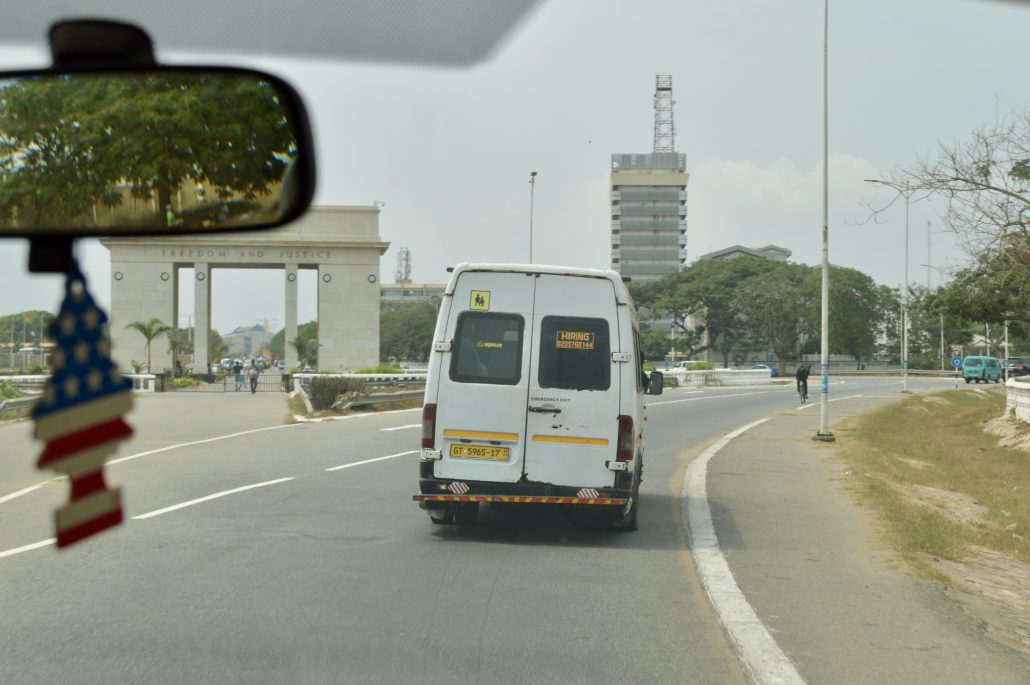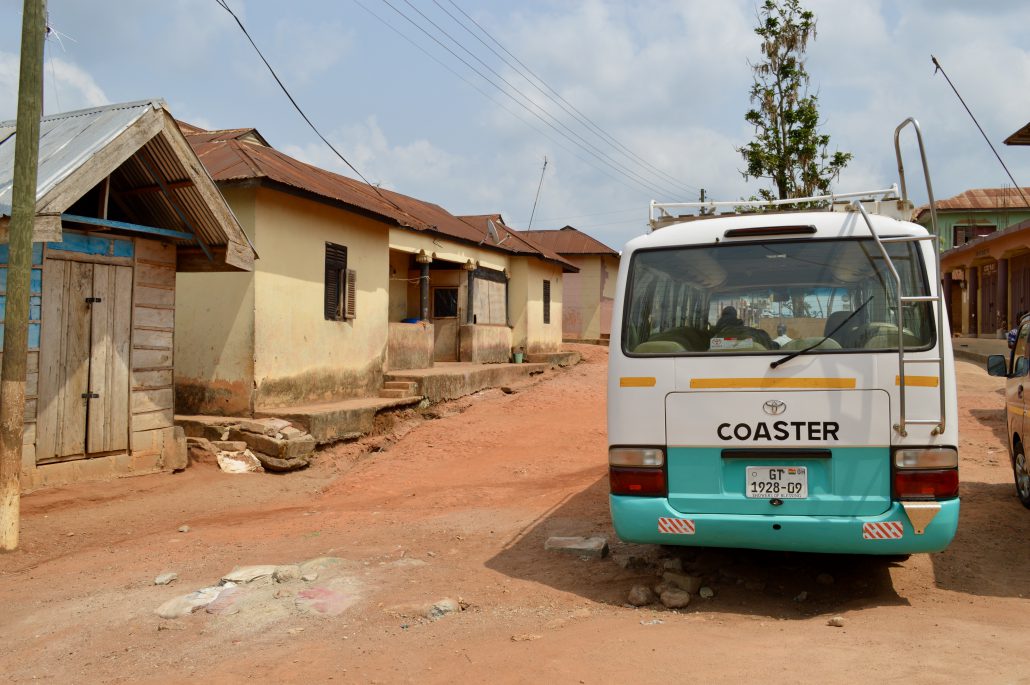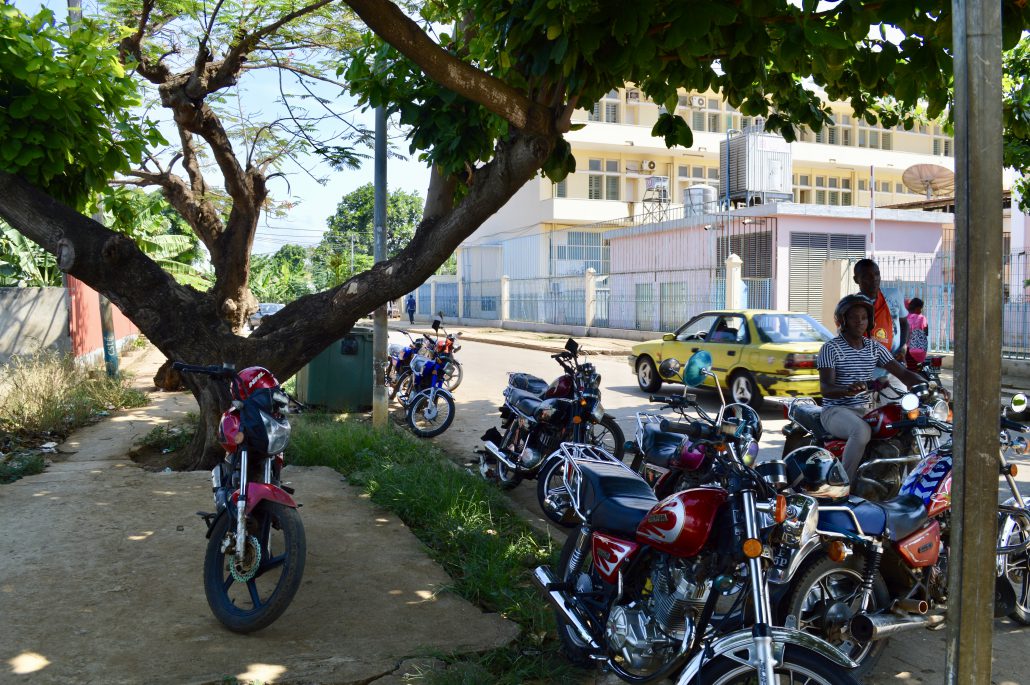BY ASHLEY YOUNG
When I first arrived at Kotoka International Airport in Accra, I was picked up, along with some other UCEAP students, by one of the UC Study Center Staff, who we call Uncle Solomon. He helped us get our luggage into the UCEAP van and then drove us to our new dorms at the University of Ghana. This was my first experience of transportation in Ghana, and wow was it exciting! Upon exiting the airport, we were immediately immersed into a whole new world. Hawkers (people selling goods and food) swarmed the streets, walking in-between cars and passing their goods through car windows to local buyers. Young men stood at street corners selling fresh coconuts alongside women roasting plantains to eat with salty groundnuts (local peanuts). People were everywhere – walking, talking, selling, living. I had never seen anything like it.

Apart from all the people, I was also struck by the traffic in Ghana, which at first seemed incredibly chaotic and unorderly. Many intersections did not have proper stop signs or traffic signals, and when they did, they were often ignored. Cars cut in and out of each other without any hesitation, driving bumper to bumper, and car horns honked incessantly to notify each other of their passing. It seemed as if there were no rhyme to reason to the traffic patterns, and yet, we somehow made it to the University relatively smoothly.
This characteristic of Ghanaian driving is rather interesting. In the U.S., traffic seems to be much more orderly, and I would argue that in fact, it is. But in Ghana, although the way people drive seems at first sight to be absolutely nuts, it works. I did not once see a car accident during my time in Ghana, though I see these frequently in the U.S. I also did not often see individuals driving while using their phones – they were generally more focused on the task at hand than American drivers. However, this does not mean that transportation in Ghana is notably safe. Because vehicles are often in poor condition, because drivers take more risks, and because passengers often do not wear seatbelts, when there are accidents, they are often very bad. It is advisable to use a seatbelt whenever possible and to avoid travelling at night when roads may be poorly lit and drivers may be especially tired.


Public transportation in Ghana is also a beast. Public transportation includes tro-tros, shared taxis or cars, and large, longer distance, government operated buses. Tro-tros are the most common form of public transportation. They are minivans that can carry between 12 and 20 people at a time and are almost always operated by two men – a driver and a mate. The driver operates the vehicle while the mate calls out the direction of the vehicle and makes hand signals indicating the vehicle’s direction to collect new passengers alongside the road. The mate also handles payments, which are always in cash. Unlike in the U.S., where scheduled buses make their way around set routes and arrive at and depart from bus stops at pre-determined times, tro-tros in Ghana are unpredictable and irregular, though fairly constant. While they do not follow set schedules, they travel along set routes and are always operating and readily available for use. To ride a tro-tro, you simply walk to a tro-tro stop (or even just stand at the side of the road) and look for mates calling out or motioning the direction of your travel. If you are not sure what direction to look out for, it is helpful to ask a local who will be glad to help you get on the right tro-tro. Tro-tros and are often packed to the brim with passengers. They are generally very beat up, hot, loud, and lacking seatbelts. However, they are a cheap, efficient, and frankly amusing way to get around. Riding in tro-tros also provides opportunities to meet locals who you might sit next to. Learning a few phrases of Twi is especially useful for these instances as it immediately shows locals that you are making an effort to better understand and appreciate their culture.

All in all, getting around in Ghana can be quite the experience! At first, it can seem a bit confusing and overwhelming, but once you get used to it, it is actually great fun!
Best,
Ashley
Complimentary Twi Lesson:
Fa benkum / nifa. (Take a left / right.)
Ko w’anim paa / tee. (Go forward a lot / a little.)
Mepakyew, gyina ha! (Please, stop here!)
Woreko* hene? (Where are you going?)
* Woreko is pronounced wo-ko; extend the o sound in place of re
Ne boo ye sidi edu. (The price is 10 cedis.)
Mepe se mefa tro-tro Tema. (I want to take a trotro to Tema.)
Ashley Young studied abroad in Accra, Ghana in 2018: https://uceap.universityofcalifornia.edu/programs/explore-ghana



